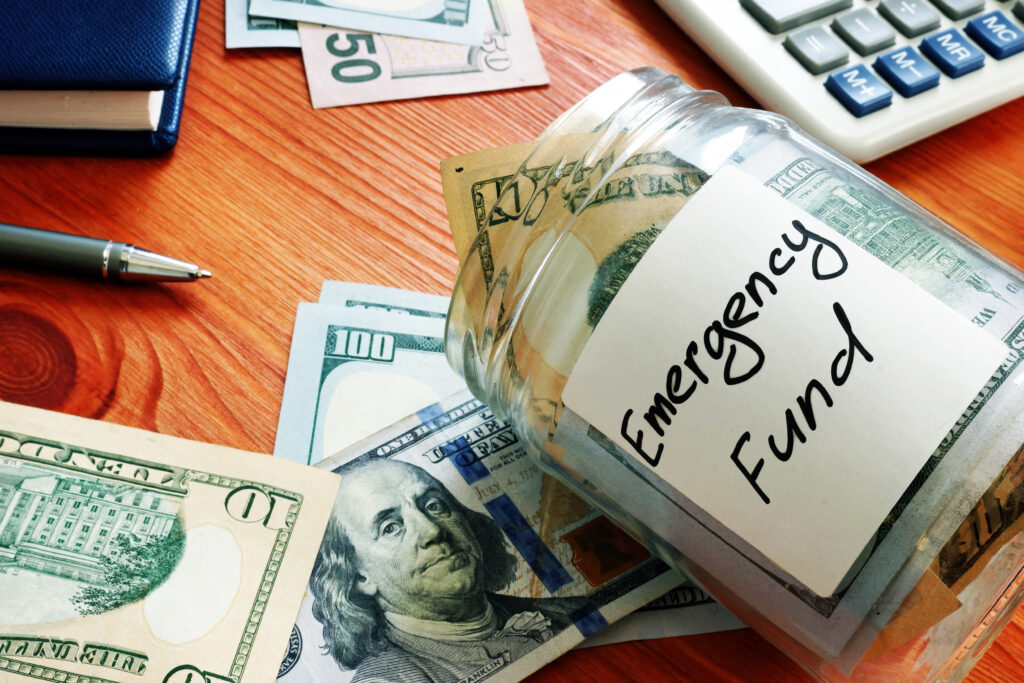
Let’s be real—saving money is hard. Between rent, bills, groceries, and the occasional (okay, frequent) coffee run, it might feel like there’s never enough left over to save. But having an emergency fund is one of the smartest financial moves you can make.
Life is unpredictable, and having a financial safety net can keep you from falling into debt when unexpected expenses arise. The good news? You don’t need a six-figure salary to start building one. Even if you’re broke, here’s how to create an emergency fund step by step.
1. Start Small—Really Small
The idea of saving thousands of dollars can feel overwhelming, but you don’t need to do it all at once. Start with a goal of just $100. That’s it. Even setting aside $5 or $10 at a time can help you build momentum. Small amounts add up, and once you hit that first $100, you’ll feel more motivated to keep going.
2. Define Your Emergency Fund Goal
An emergency fund should ideally cover three to six months of expenses, but that might not be realistic right now. Instead, set a smaller, more achievable goal—maybe $500 or $1,000 to start. This amount can cover car repairs, a medical bill, or other sudden expenses that could otherwise put you in debt. Once you reach that, you can aim for a larger cushion.
3. Find “Hidden” Money in Your Budget
You might think you have no extra money to save, but a closer look at your budget might tell a different story. Track your spending for a month and see where your money actually goes. Are you paying for subscriptions you don’t use? Buying takeout more often than you realize? Even small cuts—like making coffee at home a few times a week—can free up cash for your emergency fund.
4. Automate Your Savings
If saving money always feels like an afterthought, automate it. Set up an automatic transfer to a separate savings account every time you get paid, even if it’s just $10. When you don’t see the money sitting in your checking account, you’re less likely to spend it. Many banking apps also let you round up purchases and save the spare change, which can add up surprisingly fast.
5. Make Extra Cash (Without Overworking Yourself)
If your budget is already stretched thin, finding new ways to make a little extra money can speed up your savings. Sell things you no longer use, take on small freelance gigs, or try a side hustle that doesn’t require a major time commitment. Even an extra $50 a month can make a big difference in building your emergency fund.
6. Use “Found Money” Wisely
Anytime you get unexpected money—a tax refund, a birthday gift, a work bonus—consider putting a portion of it into your emergency fund. It’s tempting to spend it all, but even setting aside half can give your savings a big boost without completely sacrificing fun.
7. Keep Your Emergency Fund Separate
Your emergency fund should not be sitting in the same account as your daily spending money. It’s too easy to dip into it for non-emergencies. Instead, keep it in a separate savings account, preferably one without a debit card attached to it. Some people even use a high-yield savings account to earn a little interest while their money sits there.
8. Redefine What an “Emergency” Is
An emergency fund is not for vacations, holiday shopping, or impulse purchases. It’s for unexpected expenses like car repairs, medical bills, or a sudden loss of income. Before using your emergency fund, ask yourself: “Is this a need or a want?” If it’s not urgent and necessary, leave the money where it is.
9. Be Patient and Stay Consistent
Building an emergency fund takes time, especially if money is tight. Don’t get discouraged if your progress is slow. The key is consistency—saving even a little bit regularly is better than saving nothing at all. The more you build the habit of saving, the easier it will become.
10. Refill It When You Use It
At some point, you will need to dip into your emergency fund, and that’s okay—that’s what it’s there for. But once you use it, make a plan to refill it as soon as possible. Treat it like a bill that needs to be paid so that you’re prepared for the next unexpected expense.
Final Thoughts
No matter how tight your budget is, saving for an emergency fund is possible. It’s not about putting away huge amounts of money overnight—it’s about making small, consistent choices that add up over time. Start with what you can, be patient with yourself, and remember that even a little financial cushion can make a big difference in your peace of mind.
